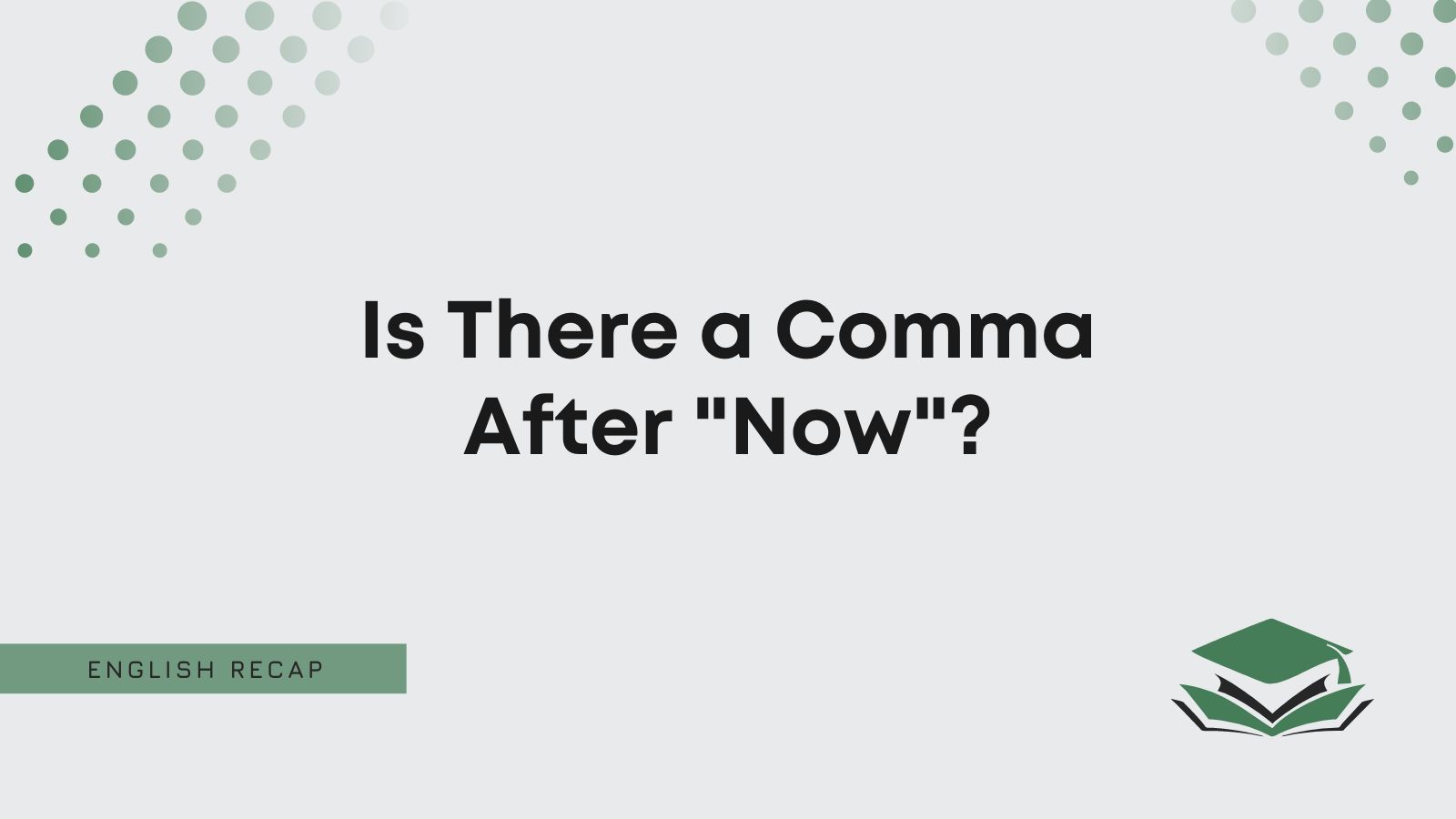Rule 1: Put a comma after “now” when you use it as a marker to start a new sentence.
- Correct: Now, let me tell you all that you did a great job.
- Incorrect: Now let me tell you all that you did a great job.
Rule 2: Do not put a comma after “now” when you use it to refer to time.
- Correct: Now I know he is not the person he pretended to be.
- Incorrect: Now, I know he is not the person he pretended to be.
Rule 3: Do not use a comma after “now” when it is the subject of a sentence, and a verb comes after it.
- Correct: She said that now was the only time she was free.
- Incorrect: She said that now, was the only time she was free.
Keep reading to discover more about commas after the term “now.” You can also learn when you should place a comma before “now.”
When to Use a Comma After “Now”
The following rule shows when you need to put a comma before “now.”
Rule 1: Use a comma after “now” when you use it to set up the next sentence.
In this role, “now” does not refer to time or the present moment.
Instead, “now” functions as a way of introducing the sentence that follows.
- We have finished the work. Now, let’s see what we have to do tomorrow.
- I got distracted for a moment. Now, what was I saying?
When to Avoid a Comma With “Now”
To find out when to avoid commas with “now,” check Rules 2 and 3.
Rule 2: You shouldn’t use a comma after “now” when you use it as an adverb, which refers to time.
This function can happen at the start of a sentence or in the middle.
At the beginning of a sentence, it is important not to include the comma because the meaning changes if you do, and it becomes a sentence marker.
- Now she knows everything because he told her last night.
The sentence above is referring to the present moment “now”. If we included the comma, “now” would simply be opening the sentence, as shown in this example:
- Now, she already knew everything anyway because she isn’t a fool.
In the middle of a sentence, you shouldn’t use a comma after “now” either. Here are a few examples:
- She said that now more than ever the government should be helping people.
- He used to work as a doctor, but now he works as a vet.
One exception to the above rule is when you add the word “right” before “now.” In this case, it is necessary to add a comma if both clauses are independent and you use the term with the conjunction.
- He used to work as a doctor, but right now, he works as a vet.
However, if “right now” appears separate from the conjunction, you usually do not need a comma, but you can add one if you like.
- She just said right now that she was busy but that she would see us later.
Rule 3: Do not put a comma after “now” when it is the subject of a sentence.
In these cases, a verb will follow “now,” and you must keep them together.
- Now is the perfect time to strike.
- He said that now wasn’t a good time.
When to Use a Comma Before “Now”
When you need to decide when to use a comma before “now,” you should refer to Rule 4.
Rule 4: Put a comma before “now” when it is the first word of a non-essential element.
In these sentences, you can remove the “now” clause, and the sentence still makes sense.
- Jack and Betty, now a couple, have been working together for years.
- Their house, now known as Rose Cottage, is isolated and remote.
Conclusion
You should only use a comma after “now” when it is a marker for the following sentence. Don’t use a comma when “now” refers to time or when a verb follows it. Also, you should put a comma before “now” when it starts a non-defining element.

